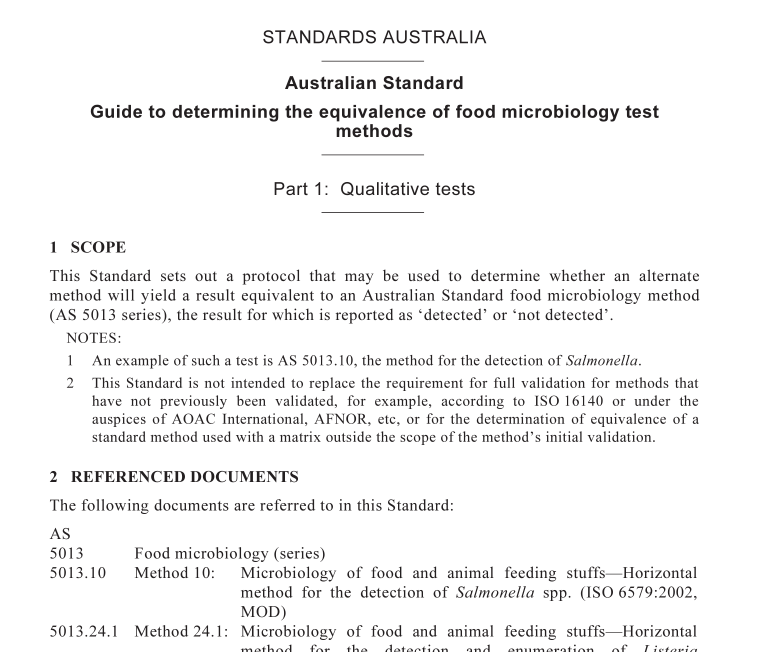AS 4659.1 pdf download – Guide to determining the equivalence of food microbiology test methods Part 1: Qualitative tests

AS 4659.1 pdf download – Guide to determining the equivalence of food microbiology test methods Part 1: Qualitative tests
When the alternate method yields a negative result but the reference method yields a positive result.
3.5 False positive When the alternate method yields a positive result but the reference method yields a negative result. NOTE: A ‘false positive’ may be a true positive which was not detected by the reference method. Such occurrences need to be carefully verified; however, for the purpose of this Standard they will be considered false positives because the Standard is aimed at demonstrating the equivalence of the two methods and is also applicable to the analysis of non-identical test samples, i.e. where the primary enrichment is different.
3.6 Fractional recovery Validation criteria that are satisfied when replicate samples of either the alternative or reference method yield 50% (range 25%–75%) positive responses.
3.7 Matrix The food sample in which the target organism is to be detected.
3.8 Presumptive The result given by the method at a point where a decision may be made as to whether or not the matrix may contain the target organism. The method continues to confirm whether the presumptive result is in fact a positive result.
3.9 Reference culture The culture designated in the appropriate Australian Standard method.
3.10 Reference method The Australian Standard method against which the alternate method will be compared.
3.11 Target organism The genus, species, antigenically, toxicologically or physiologically defined group of organisms which the reference method is designed to detect.
4 PROCEDURE
4.1 Define the equivalence determination The equivalence determination should be defined in terms of the following:
(a) The target organism’s genus, species, serotype, etc.
(b) The matrix under examination; the food and the characteristics that define it, e.g. the matrix should be defined in terms of characteristics such as pH, solids level, water activity, presence and composition of preservatives, season of production, brand name, etc. depending upon the nature of the matrix. The procedures outlined in the Standard should be repeated for each matrix intended for use with the alternate method.
NOTE: When determining equivalence of an alternate method the laboratory should select the matrices to be included in the evaluation from those within the scope of the standard method. This Standard is not intended for the validation of matrices outside of the scope of either the alternate method or the standard method. Reference should be made to standard texts and the literature to support the choices of matrices. The choice should take into account the range of samples tested by the laboratory and the effects that the natural variation in significant parameters may have on the detection of the target organism.









